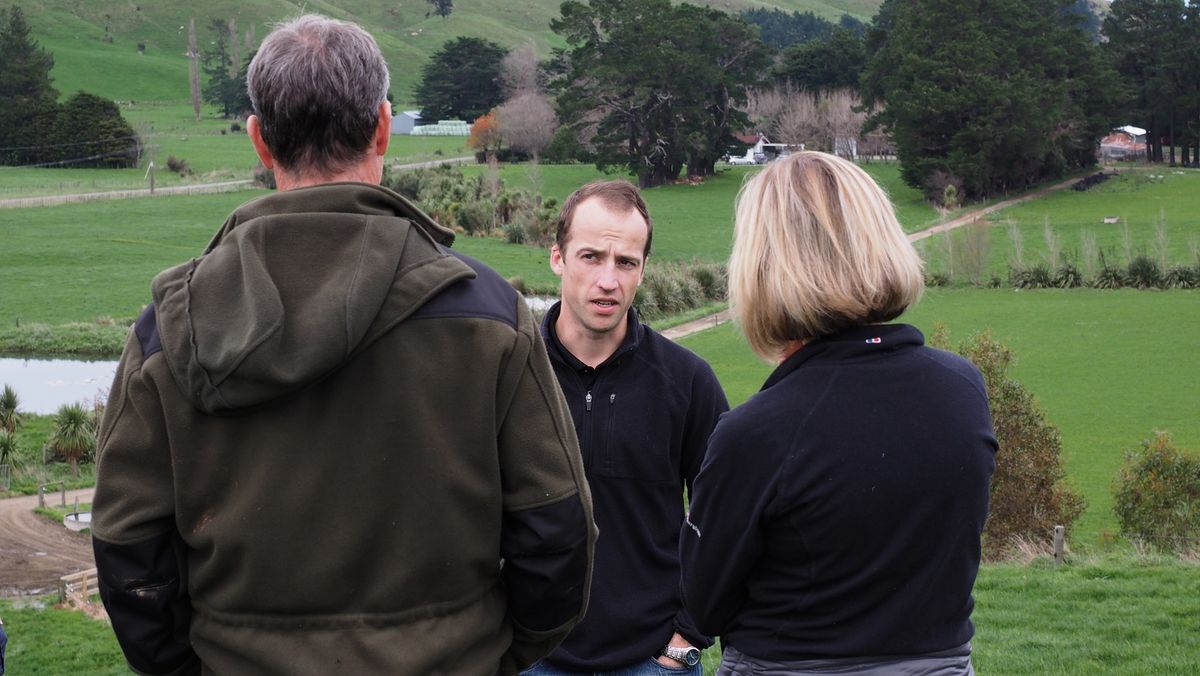
Scientists working with Living Water: DairyNZ's Tom Stephens
17 July 2018
Living Water is a Fonterra/DOC partnership that brings farmers, scientists, councils, communities and Mana Whenua together to find game-changing solutions that will enable farming, fresh water and healthy eco-systems to thrive side-by-side.
Scientists play a huge part in designing and monitoring Living Water trials – and we caught up with Dr Tom Stephens of DairyNZ about what it’s like to work on the partnership.
1. Describe a typical day when working on the Living Water partnership.
I’m a scientist, so the day normally starts and ends with questions. To answer what effect Fonterra farmers are having on water, we first discuss which values or uses for water are we interested in, and then how the ecosystem relates to those values.
An example in the Living Water Hikurangi catchment would be, what effect is farming having on native fish as a measure of the catchment’s ecosystem health. That prompts us to ask what the temperature and oxygen levels are in nearby drains or the wider Wairoa River, but equally what impact is sediment loss having on clarity and the ability for Galaxiids (our whitebait species) to migrate to and from the Kaipara to complete their life-cycle. Then we get cracking and design a study to answer just that with robust data, analysed carefully to give us the evidence we need to come back to farmers with solutions.
2. Why do you do your job?
I grew up around water, travelling the world with our family and a father who worked on irrigation schemes in developing countries. I’ve always liked asking questions, so it was natural that I’d become a scientist and a water scientist at that. When in the UK, I was surrounded by incredible waterways like the Fens, the Wash and the Norfolk Broads – stunning wetlands, coastal marsh and peat lakes surrounded by and the consequence of centuries of land use. That’s taught me both to value water and to know that we can have high-value, ecologically resilient waterways in New Zealand side-by-side with well-managed farms, which is really all I’m about – learning and teaching the how.
3. What difference do you think it’s making?
Huge, I’m part of a larger water science team at DairyNZ that works with the country’s leading scientists to help answer the questions and come up with solutions. Living Water has recently installed a series of new retention bunds in the Hikurangi, bioreactors in Waituna, as well as riparian management across all five Living Water catchments. Each is either new tech on old thinking or new thinking on old tech, but in the last five years, dairy farmers have moved forward quickly to accepting our responsibility to care for water through to the how of doing that. Just now our team is working on answering what sorts of reductions in sediment, nutrients and bacteria we can expect from grass filters along races (earlier estimates range from 35-87 percent over, say, 3 metres, so pretty broad). We’ve just also tried to use our knowledge of the landscape around Waituna to identify where to help farmers build retention bunds to capture storm runoff – often a major source of sediment and phosphorus (so thinking about not just the what, but the where).
4. How is it different to your other work?
Working with Living Water is great – in this job I get to work with many farmers across the country and different companies, but I really like the practical edge Living Water is taking on showing how the science can be used to farm smarter. My other work is not much different, it’s all about asking questions and finding answers to we can build solutions – I’ll be the first to say many scientists often stop at the asking questions which isn’t the same as fixing a problem. I like that Living Water wants to fix the problem and this is core to all the projects we spend levy money on with NIWA, ESR, AgResearch or Manaaki-Whenua Landcare Research.